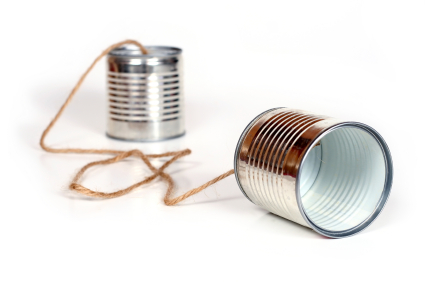3 Ways to be More Effective in Giving and Receiving Feedback
 Unless you’re an art student or critic, giving and receiving feedback probably isn’t a formal part of your daily routine. The interaction can be stressful and contentious, regardless of whether you are the giver or receiver. Is it any wonder we avoid it? The truth is, we give and get feedback more often than we realize but we may not think too carefully about how we give it. Here are a few ways to make giving and getting feedback a better experience. They are useful in both your professional and personal life.
Unless you’re an art student or critic, giving and receiving feedback probably isn’t a formal part of your daily routine. The interaction can be stressful and contentious, regardless of whether you are the giver or receiver. Is it any wonder we avoid it? The truth is, we give and get feedback more often than we realize but we may not think too carefully about how we give it. Here are a few ways to make giving and getting feedback a better experience. They are useful in both your professional and personal life.
1.Treat it like a gift. Assume that the person giving you feedback wants you to be successful and that’s why they’re reaching out to you. You can (and should) encourage others to regularly share their thoughts about your performance by reacting as if you were receiving a gift. Thank them for their candor. Request clarifying examples and ask probing questions to make sure you understand their comments. Don’t immediately dismiss awkward comments by being defensive; sometimes people need help to clarify their thoughts. Unless they are truly being rude, give them a chance by listening respectfully.
In the end, you have complete control to use their feedback or discard it. It’s better to know how others perceive your performance — even if it can sting a little at times — than to be in the dark.
2. Practice OBF. What is it? Objective Behavioral Feedback puts the emphasis on what you observe someone did or said and the impact it had on you or others. Why is it good? The OBF technique is specific, timely, set in context, respectful, looks to future performance, and it’s useful. It also takes some practice!
OBF is based on:
- behavior not personality
- description not judgment
- observation not inference
OBF describes:
- what you see a person do
- what you hear a person do
- what you read that a person wrote
- what you see or hear a person do/say as a result of someone else’s actions (impact)
- what YOU do, say or feel as a result of someone else’s actions (impact)
For example:
The behavior: At the team meeting on Wednesday, you arrived ten minutes after the start of the meeting. I noticed that everyone, including me, stopped what they were doing and directed their attention at you.
The impact: The impact on me was that I lost my focus.
The idea is to describe objectively how a person’s behavior affects you and others. Notice how you are not making a judgment. Instead, you’re describing what you observed. This technique is an integral part of the University of California’s Management Skills Assessment Program for employees.
3. Make a compliment sandwich. This simple technique is especially useful when you have negative feedback to give. Start your comments with what worked about the person’s performance or behavior. Next, clearly state what didn’t work. Finally, end with some positive reinforcement: suggesting steps to remedy the situation, asking them for their ideas, or simply offering your encouragement. This technique is as good for the giver as the receiver. Why? It encourages the giver to shift their perspective and glean something positive from the situation before they proceed with their feedback. This tried-and-true method works best if you balance the negative and positive.
In all cases, be specific and give (or ask for) examples. While “great presentation” is a boost to a speaker’s confidence, it doesn’t provide tangible insight for their next presentation. A better comment would be “Your demographics chart helped me understand the issue” or “I felt engaged when you walked into the audience and asked questions.”
“If you haven’t got anything nice to say about anybody, come sit next to me.” — Alice Roosevelt Longworth
Now It’s Your Turn
Find other useful tips on giving and receiving feedback in these articles.
How to handle negative feedback in six simple steps
Provide Feedback that has an Impact
Do you have a favorite technique?
Share your feedback on these tips. You can comment below or email Leslie and me at yourlifeatwork@gmail.com.
